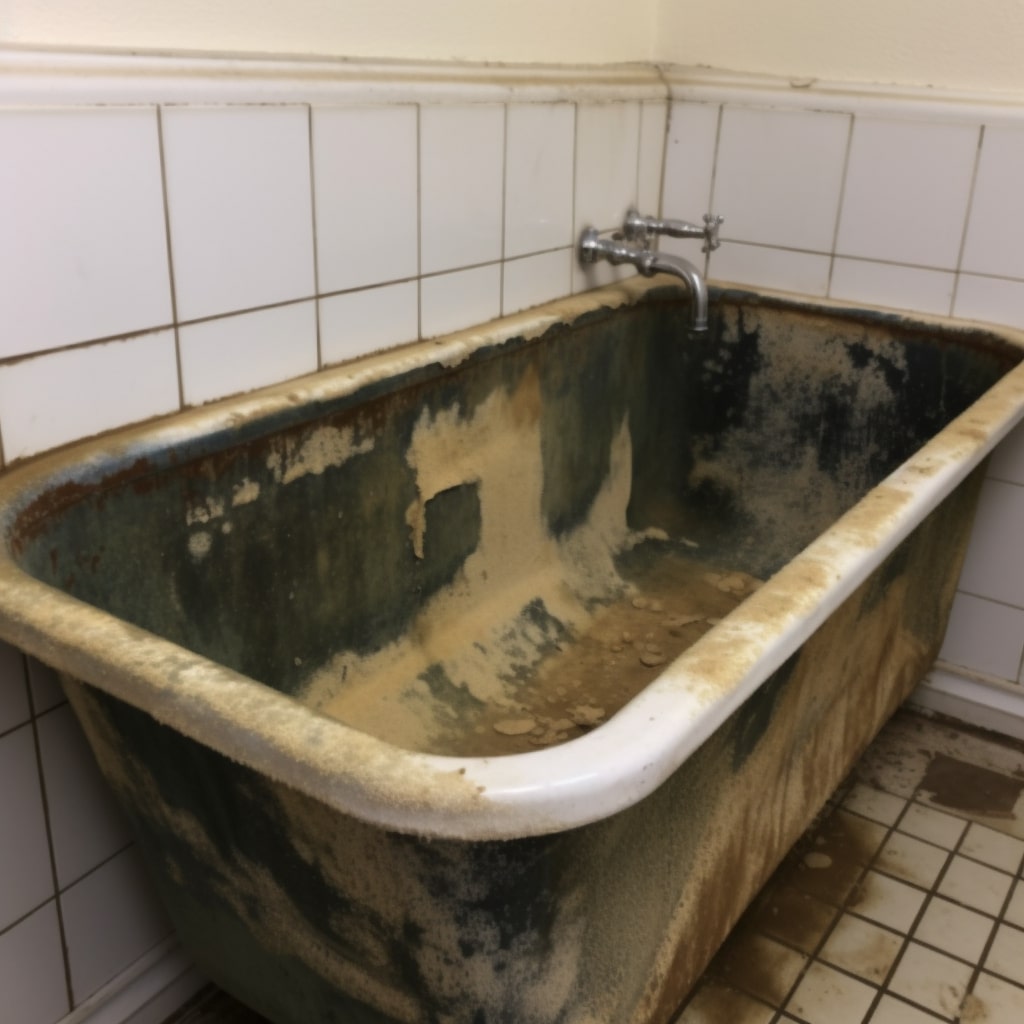In this article, we will explore effective strategies for removing and preventing mold in bathrooms and showers.
Mold growth in these areas is a common issue due to the high levels of moisture and humidity.
Not only is mold unsightly and damaging to surfaces, but it can also pose health risks.
We will provide practical advice on safety measures, professional help, and cleaning solutions, as well as tips for preventing mold from reappearing.
By following our expert guidance, you can maintain a clean and healthy bathroom environment.
Understanding the Dangers of Bathroom Mold
- Bathroom mold poses various health risks and can lead to respiratory issues, allergies, and other adverse health effects.
- Exposure to mold spores can trigger allergic reactions, such as sneezing, coughing, and skin irritation.
- It can also aggravate existing respiratory conditions, like asthma, and cause difficulty in breathing.
- Additionally, prolonged exposure to bathroom mold can result in more serious health problems, including respiratory infections and compromised immune function.
- It is crucial to address and prevent bathroom mold to safeguard one’s health.
Essential Safety Measures for Mold Removal
To ensure the safety of individuals undertaking mold removal, it is essential to follow proper safety measures and use appropriate protective equipment.
Some essential safety measures for mold removal include:
- Wear safety goggles, rubber gloves, and an N95 mask for protection.
- Seek professional help for mold over 10 square feet.
- Use a bleach solution for killing mold on nonporous surfaces.
- Utilize vinegar solution for certain types of mold on nonporous surfaces.
- Use baking soda for killing black mold and absorbing moisture.
- Never mix chlorine bleach with other cleaning solutions or ammonia-containing detergents.
Removing Mold From Bathroom Ceilings
To effectively remove mold from bathroom ceilings, it is important to use a bleach and water solution for painted drywall ceilings and to scrub grout lines if necessary.
For painted drywall ceilings, create a solution with one part bleach and three parts water. Apply the solution using a sponge or cloth, making sure to wear gloves and goggles for protection. Scrub the affected areas gently, repeating the process if necessary.
For tile ceilings, use the same bleach and water solution and scrub the grout lines to remove any mold.
Effective Techniques for Cleaning Bathroom Tile
Bathroom tile can be effectively cleaned using a bleach and water solution, followed by scrubbing the affected areas and rinsing thoroughly. To clean bathroom tile effectively, follow these steps:
- Prepare a bleach and water solution.
- Spray the affected areas with the solution and allow it to dry.
- Scrub the grout lines with a soft bristle brush.
- Rinse the tile thoroughly and repeat the process if necessary.
- For extra protection, consider spraying the tile with vinegar.
Tackling Mold on Bathroom Walls
When dealing with mold on bathroom walls, it is important to take the following steps:
- Thoroughly spray the affected area with a bleach and water solution.
- Allow the solution to soak for some time, giving it a chance to kill the mold.
- After soaking, scrub the area clean with a brush.
- This process should help remove any discoloration caused by the mold.
- If some discoloration remains after scrubbing, it may be necessary to repeat the process.
- For extra protection against mold growth, you can also spray the area with vinegar.
Remember to prioritize your safety when dealing with mold. Wear protective gear such as gloves and a mask, and ensure that the bathroom is well-ventilated during the cleaning process.
Proper Maintenance of Exhaust Fan Vents
For optimal performance and prevention of mold growth, it is essential to regularly clean and maintain the exhaust fan vents in your bathroom.
Proper maintenance of exhaust fan vents includes:
- Cleaning the plastic or metal cover with a bleach solution.
- Vacuuming the vent to remove dust and particles.
- Seeking professional help for mold in the ductwork.
- Surface cleaning the vent without removing the motor.
Preventing Mold in the Toilet
To prevent mold in the toilet, regularly clean and disinfect the bowl and surrounding areas using a bleach solution.
Mold thrives in moist environments, so it is crucial to keep the toilet clean and dry. Scrub the inside of the bowl with a brush and wipe down the exterior.
Additionally, adding a cup of bleach to the tank once a week can help prevent mold growth.
For mold inside the tank, use a mixture of vinegar and baking soda to scrub under the rim.
Key Strategies for Mold Prevention in Bathrooms and Showers
Effective Strategies to Prevent Mold in Bathrooms and Showers include:
- Ventilate the bathroom by opening windows or using exhaust fans to reduce humidity.
- Clean and dry bathroom surfaces regularly to prevent mold growth.
- Check for leaks in tiles and drywall and repair them promptly.
- Use mold-resistant products such as paint, caulk, and shower curtains.
Conclusion
In conclusion, it is crucial to address and prevent mold growth in bathrooms and showers due to the potential health risks and damage it can cause.
By following the safety measures and effective cleaning techniques outlined in this article, individuals can successfully remove and prevent mold in these areas.
Additionally, regular maintenance, proper ventilation, and the use of mold-resistant products are key strategies to ensure a clean and healthy bathroom environment for everyone.

